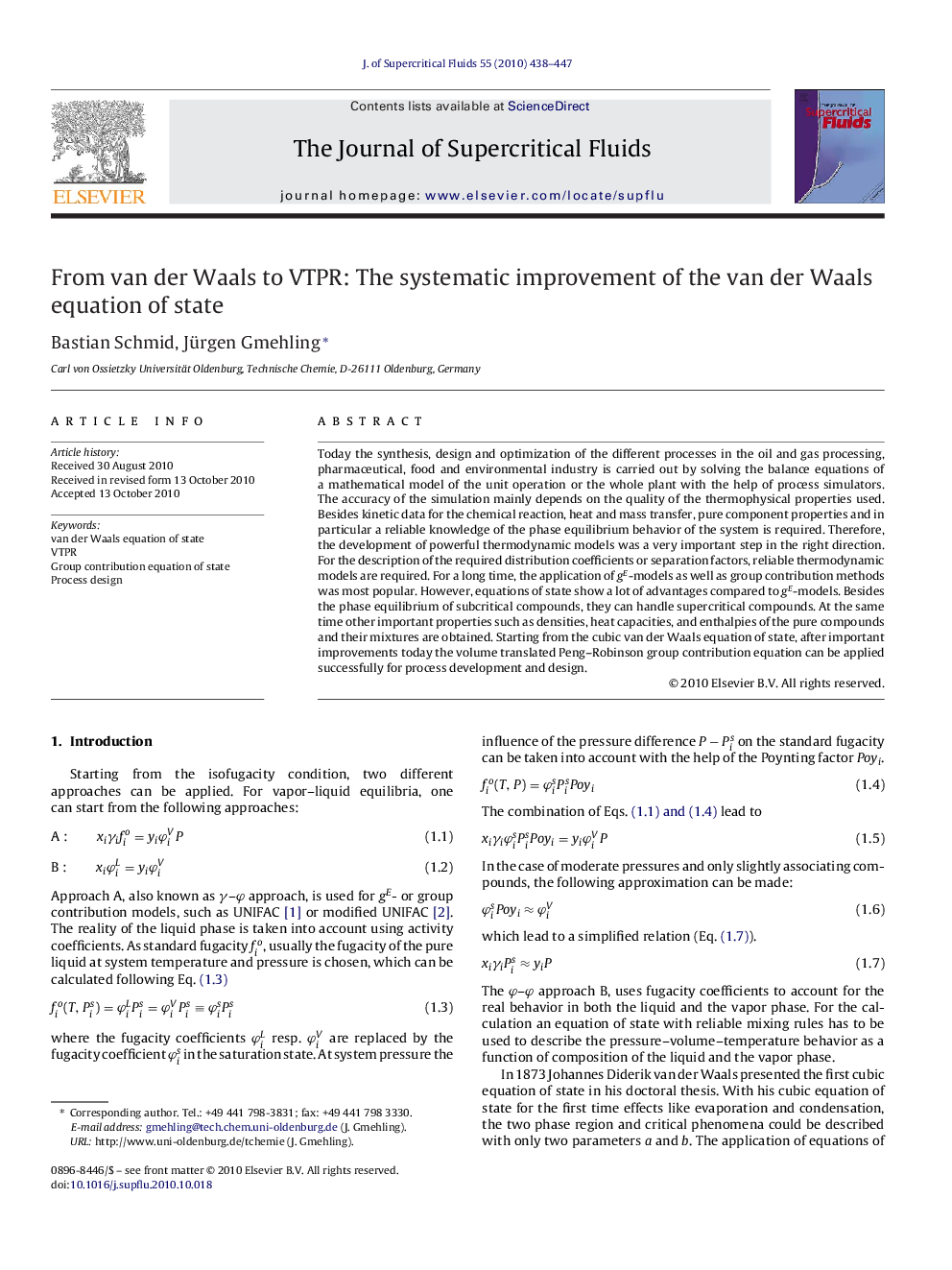| Article ID | Journal | Published Year | Pages | File Type |
|---|---|---|---|---|
| 231260 | The Journal of Supercritical Fluids | 2010 | 10 Pages |
Today the synthesis, design and optimization of the different processes in the oil and gas processing, pharmaceutical, food and environmental industry is carried out by solving the balance equations of a mathematical model of the unit operation or the whole plant with the help of process simulators. The accuracy of the simulation mainly depends on the quality of the thermophysical properties used. Besides kinetic data for the chemical reaction, heat and mass transfer, pure component properties and in particular a reliable knowledge of the phase equilibrium behavior of the system is required. Therefore, the development of powerful thermodynamic models was a very important step in the right direction. For the description of the required distribution coefficients or separation factors, reliable thermodynamic models are required. For a long time, the application of gE-models as well as group contribution methods was most popular. However, equations of state show a lot of advantages compared to gE-models. Besides the phase equilibrium of subcritical compounds, they can handle supercritical compounds. At the same time other important properties such as densities, heat capacities, and enthalpies of the pure compounds and their mixtures are obtained. Starting from the cubic van der Waals equation of state, after important improvements today the volume translated Peng–Robinson group contribution equation can be applied successfully for process development and design.
Graphical abstractFigure optionsDownload full-size imageDownload as PowerPoint slide
